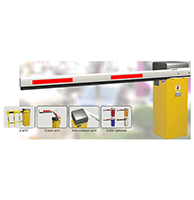Expanding Capabilities with Injection Molding Secondary Services
While injection molding produces precise injection molding parts, additional processing is often needed to deliver finished components ready for use in final products. Injection molding companies offer a wide range of secondary services to augment basic molding with additional value-added operations. These post-molding enhancements include inserting metal inserts for strength reinforcement or electrical conductivity, applying protective/decorative coatings through painting or plating, precision marking of parts with pad printing or laser engraving for branding and traceability, assembling separately molded plastic or non-plastic components to create finished sub-assemblies, and more.
With diverse secondary services seamlessly integrated with polymer molding production, manufacturers can deliver not just bare plastic parts off the mold, but complete, decorated, and functionally enhanced components ready for integration into larger products. This allows creating more production-ready parts tailored to customers’ exact specifications and quality needs while minimizing additional processing for the end manufacturer. This article provides an overview of the most common secondary services that expand injection molding capabilities for more complete, functional parts.
Insert Molding
Insert polymer molding places a metal, plastic, or composite insert inside a plastic part during molding. The insert becomes permanently encapsulated within the part. Inserts provide:
- Reinforcement – Metal or composite inserts add strength and rigidity.
- Electrical conductivity – Conductive tracks for EMI shielding.
- Heat resistance – Withstand higher temperatures than plastic.
- Threaded anchors – Allow molding strong threads for fasteners.
- Decorative accents – Visual contrast with different materials.
Insert selection considers bonding compatibility, process temperatures, and automated insertion. This mold-in solution integrates functional elements while minimizing assembly.
Overmolding
Overmolding adds a second layer of plastic onto a substrate part. The substrate can be injection molded, machined, stamped, etc. Overmolding provides:
- Cushioning – Soft thermoplastic layer for grip or impact absorption.
- Sealing – Protective skin for water/weather resistance.
- Insulation – Electrical, thermal, or acoustical insulation layer.
- Combined materials – Blend properties like rigidity and flexibility.
Proper adhesion between materials is critical. Overmolding bonds dissimilar materials into composite components with expanded capabilities.
Painting
Painting is applied to injection molded parts to:
- Enhance appearance – Color, metallic/pearlescent effects, color coding of components.
- Protect against wear – More durable painted exterior.
- Resist chemicals/solvents – Prevent corrosion and degradation.
- Obscure melt lines – Hide molding artifacts for better aesthetics.
- Texture finishes – Simulate wood grain, carbon fiber or other patterns.
Automated painting integrates smoothly into production. Rigorous process controls ensure consistent, high-quality finishes.
Pad Printing
Pad printing is an excellent marking solution for injection molded parts. The tampon printing process transfers a 2D image onto 3D surfaces via an indirect offset method. Capabilities include:
- Product branding – Logos, stylized text, graphic symbols.
- Part identification – Serial numbers, date codes, barcodes.
- Instructions – Diagrams, emblems, operational markings.
- Decoration – Decorative patterns, icons, and effects.
Pad printing creates durable markings on injection molded parts with detailed definition, even on complex geometry.
Laser Engraving
As an alternative to pad printing, laser engraving marks parts by selectively ablating (vaporizing) the plastic surface with a precision laser beam. Advantages include:
- Fine detail – Crisp resolution down to 0.005 in. for small text and intricate graphics.
- Range of materials – Works on metals, plastics, wood, glass, ceramics.
- Flexibility – On-the-fly pattern changes.
- Speed – Lasers mark quickly without physical contact with the part.
Laser marking provides high precision branding and identification on plastic parts.
Plating
Plating applies metal coatings onto injection molded plastic parts through electrochemical deposition. Typical uses include:
- Corrosion resistance– Protect base plastic from weathering.
- Conductivity – Deposit conductive elements.
- Wear resistance – Hardmetal platings prevent abrasion.
- Decoration – Colored platings like chrome for styling.
Materials like nickel, copper, and chromium provide functional, decorative, and scratch-resistant metallic finishes.
Hot Stamping Foils
Hot stamping transfers pigmented foil film onto parts using heat and pressure for decorative effects. Applications include:
- Chrome/metalized finishes – Simulate polished or brushed metal.
- Woodgrain patterns – Simulate natural wood look on plastic.
- Carbon fiber patterns – Add faux carbon fiber graphic.
- Shimmering effects – Holographic patterns.
Foil stamping offers eye-catching embellishment of plastic components without paints or dyes.
Ultrasonic Welding
Ultrasonic welding bonds injection molded thermoplastic parts through localized melting at the joint interface. Advantages:
- No adhesives – Ecological and prevents outgassing.
- Precise, narrow welds– Minimizes heating to just the weld zone.
- Fast – Welds in under 2 seconds.
- Strong bonds – Heat and pressure create durable joints.
Ultrasonic welding provides clean, fast assembly of multi-component products.
Hot Plate Welding
Hot plate welding also directly bonds plastic parts but uses broader heating methods:
- Hot bar welding – Heated pressure bar melts and fuses the joint.
- Hot gas welding – Directed hot air jet melts and bonds the interface.
- Radiant welding – Infrared heaters soften the joint for welding.
The appropriate welding approach depends on factors like material, joint accessibility, bond strength needed, and production rate.
Mechanical Assembly
For non-weldable plastics or multi-material components, injection molded parts are assembled mechanically:
- Screws – Threaded fasteners for rigid, disassembleable connections.
- Snap fits – Integrated clips, tabs, and slots for quick assembly.
- Press fits – Precision-molded interference fit of components.
- Adhesives – Gluing for immoveable, leakage-free bonds.
Efficient mechanical assembly depends on molding tight-tolerance features and strategizing the assembly sequence.
Automated Part Handling
For lights-out manufacturing, automated secondary processes are integrated with robotic material handling:
- Pick-and-place robots – Handle fragile or complex parts between processes.
- Conveyor systems – Automatically move parts between work cells.
- Machine integration – Data exchange for workflow continuity.
Automation maximizes repeatability and throughput for 24/7 production.
Conclusion
Secondary services augment basic injection molding to expand manufacturing capabilities:
- Inserts allow molding functional elements into parts.
- Multi-shot techniques like overmolding combine resins.
- Coatings apply decorative, protective, and functional qualities.
- Marking methods add precision branding and identification.
- Assembly integrates separately molded components into finished products.
With this range of value-added services, injection molders can deliver not only detailed plastic components, but fully functional, decorated, and production-ready products.
In summary, secondary services for injection molding:
- Add functionality like metal inserts, EMI shielding, and threads
- Integrate components through multi-shot molding or assembly
- Enhance aesthetics through coatings and surface treatments
- Enable part traceability via printed markings and laser engraving
- Automate processes for optimal productivity
By expanding capabilities beyond basic molding, secondary services offer customers more complete, finished parts catered to their exact product needs.



